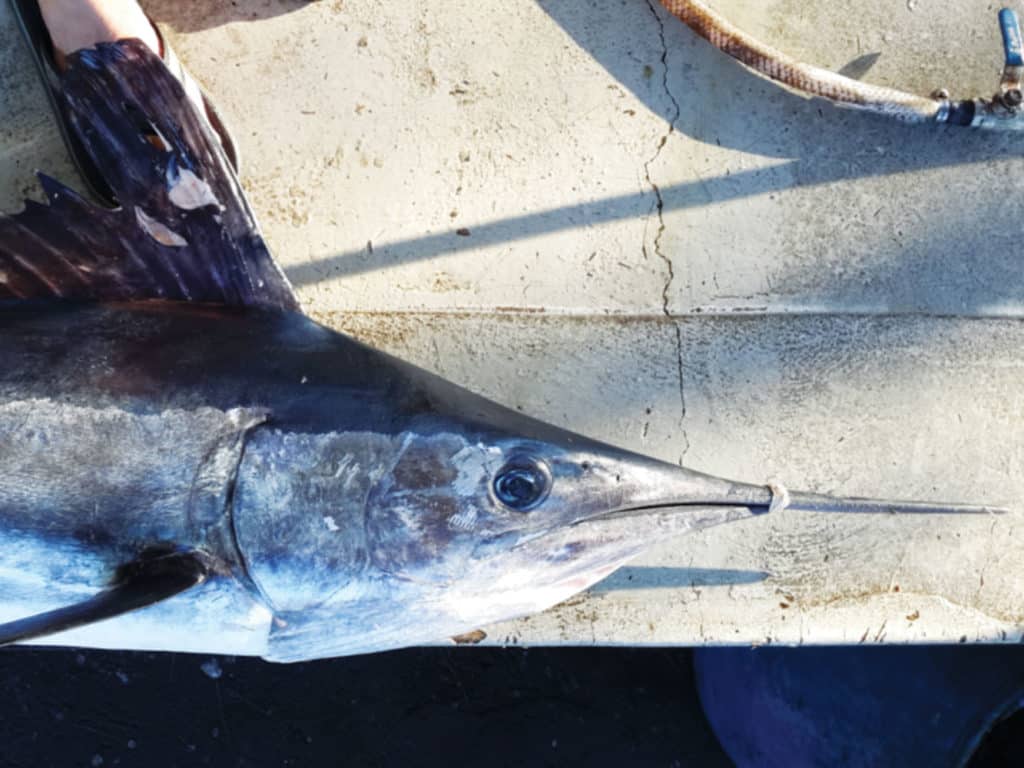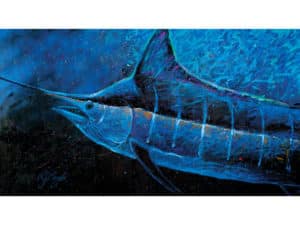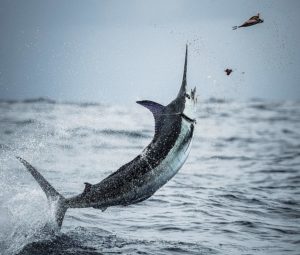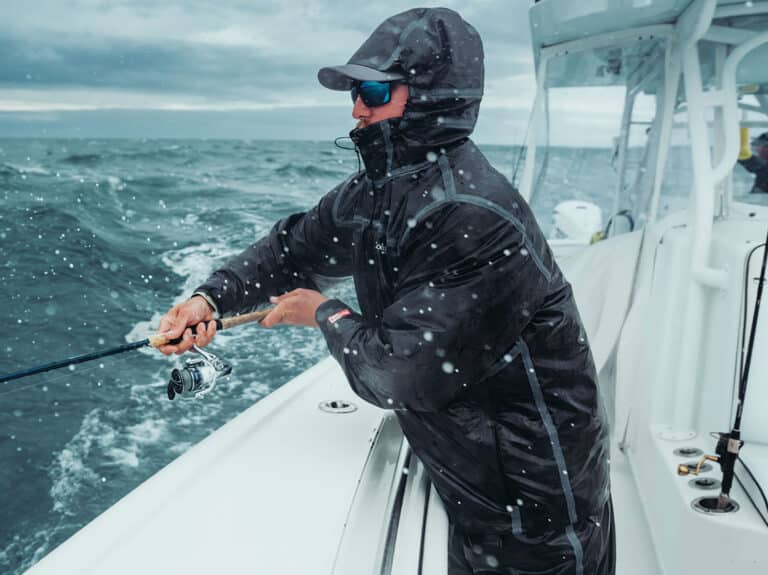
For all the angler obsession and the glamour billfish generate, they remain a bit of a mystery. And of all the different species, we probably know the least about spearfish. Worldwide, there are four species of spearfish: Mediterranean (Tetrapturus belone), shortbill (Tetrapturus angustirostris), roundscale (Tetrapturus georgii) and longbill (Tetrapturus pfleugeri).
Generally speaking, spearfish are considered the rarest of the billfish, but they are fairly common in certain places. They are the most abundant istiophorid in the Mediterranean, and you stand pretty good odds of catching a shortbill in Hawaii if you put the time in. Over the last decade or so, we’ve also discovered a substantial proportion of white marlin caught off the mid-Atlantic coast of the United States are actually roundscale spearfish, which bear an uncanny countenance to whites.
Longbill spearfish might be the least encountered of the bunch. They weren’t even formally described as a valid species until 1963, 171 years after the first billfish species (sailfish) was described. They are thought to inhabit the Atlantic Ocean only, with higher densities in the western than eastern side of the pond. However, we have little in the way of good fisheries data for this species. Until fairly recently, ICCAT lumped catch data for longbill spearfish and sailfish into a single stock assessment. In 2009, the combined catch data was split with sailfish getting periodic assessments, with the most recent taking place this year. However, no assessments have been conducted on longbill spearfish, so as of right now, the status of their stocks remains largely unknown.
During the first week of May, I received an email from an angler in Richards Bay, South Africa, who needed help identifying a billfish he caught. Richards Bay is a very fishy location, and you have the chance of hooking virtually every species of billfish that resides in the Indo-Pacific. The angler was pretty sure it was a spearfish and suspected it could be a longbill, but he’d never seen or heard of one being caught in that area. I was also pretty dubious about it being a longbill given that it was caught in the Indian Ocean, so I went about keying out the fish using the pictures he provided.
As I scrolled through the images, one in particular grabbed my attention. It was good shot of the fish’s underside, and I could see that the position of the vent was very far forward of the fish’s anal fin — a clear indication it probably was a spearfish. However, the bill was clearly too long for it to be a shortbill spearfish, which would be the most logical species given the location. Looking at some other of the morphological features, I concluded it might be a longbill, but I wanted another opinion and sent the photos to renowned billfish biologists John Graves and Bruce Collette. Graves got back to me right away and keyed out the fish as well. In short order, Graves agreed the fish was most likely a longbill, but he wanted a genetic sample just to make sure.
That sample is on its way to Graves, and we should get confirmation on the fish’s identity soon. However, if this does indeed prove to be a longbill spearfish, it further underscores that we really don’t know a lot about these animals in terms of where they occur, what their migration patterns are and how healthy their populations are. To find out the results of the analysis, visit marlinmag.com/spearfish-dna.







